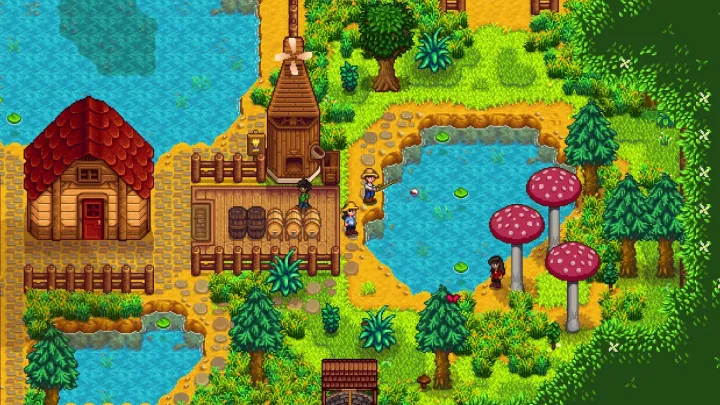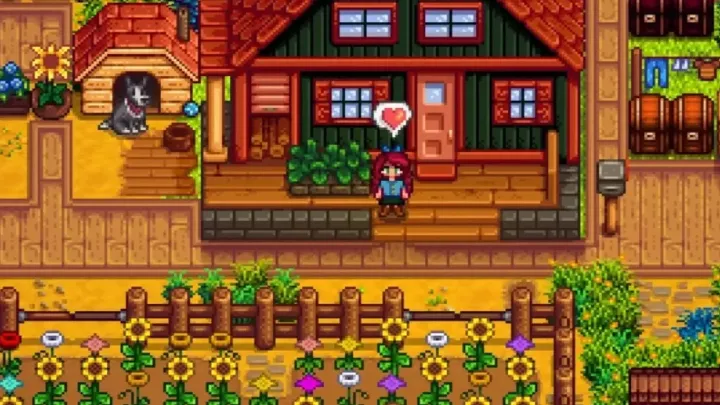Stardew Valley is a beloved farming simulation game that blends agriculture, mining, fishing, crafting, relationships, and town life. Players inherit a run-down farm and are tasked with restoring it to prosperity while interacting with the townspeople, participating in festivals, and exploring the surrounding countryside. The game offers a relaxing yet deeply engaging experience with endless possibilities for progression, customization, and discovery.
This guide provides a step-by-step approach for both new and experienced players, covering essential gameplay mechanics, strategies for farm management, resource collection, skill development, and relationship building. By following these tips, players can maximize efficiency, enjoy the game at their own pace, and experience the full depth of Stardew Valley.
Getting Started with Your Farm
The first step in Stardew Valley is to choose the type of farm layout that suits your playstyle. Each layout, whether standard, riverland, forest, hilltop, wilderness, or beach farm, offers different advantages and challenges. Consider which features align with your preferred farming methods, such as crop farming, animal husbandry, or fishing.
After selecting a layout, spend the first few days clearing debris, planting initial crops, and familiarizing yourself with the controls and game interface. Time management is crucial, as each day has limited hours. Prioritize essential tasks like watering crops, feeding animals, and harvesting to maximize early growth and income.
Early game planning sets the foundation for long-term success. Invest in crops that yield high profits during each season, and pay attention to the weather forecast. Understanding seasonal crops and planning ahead prevents wasted time and resources.
Planting and Managing Crops Efficiently

Crops are the heart of Stardew Valley’s economy. Choosing which crops to plant each season requires balancing cost, growth time, and profit potential. Fast-growing crops are ideal for early seasons, while long-term crops provide higher revenue later.
Watering crops daily is essential for maintaining growth, although sprinklers become a valuable investment for automating this task. Fertilizers can improve crop quality, increasing their selling price and generating more income. Planning crop placement and irrigation systems efficiently saves time and boosts productivity.
Rotating crops between seasons and paying attention to crop calendars ensures continuous income. Certain crops are used in crafting or festivals, so planting strategically supports both economic and community goals. Effective crop management forms the backbone of a successful farm.
Raising Animals and Expanding Livestock
Animal husbandry adds another layer of gameplay and profit. Chickens, cows, goats, sheep, and pigs provide eggs, milk, wool, and truffles, all of which can be sold or used for crafting. Construct barns, coops, and other buildings to house animals and upgrade them over time.
Feeding and interacting with animals daily improves their happiness, increasing the quality of produce. Some animals unlock special products when fully happy, adding variety to farm income. Automation tools like sprinklers and auto-feeders reduce repetitive tasks, allowing players to focus on other activities.
Expanding livestock requires strategic investment. Consider animal care costs, feed supply, and space management. Balancing crops and animals ensures a steady flow of revenue and supports farm growth over multiple seasons.
Mining, Foraging, and Resource Collection
Exploration beyond the farm is vital. The mines contain ores, gems, and valuable resources used for crafting, upgrades, and income. Each mine level introduces stronger enemies and more valuable resources. Stock up on weapons, food, and tools before venturing deep into the mines.
Foraging around the map provides seasonal items like berries, wild vegetables, and mushrooms. Foraged goods can be sold, gifted, or used in recipes. Some foraged items are required for completing bundles in the community center, unlocking rewards, and enhancing town progression.
Balancing mining and foraging activities ensures a diverse income and access to resources for crafting and upgrades. Efficiently gathering resources supports both farm development and social progression.
Fishing and Water-Based Activities
Fishing is a profitable and relaxing activity that provides food, gifts, and community center items. Each body of water hosts different fish depending on the season, weather, and time of day. Certain rare fish are required for bundles or quests, making timing and preparation important.
Upgrade your fishing rod and use bait or tackle to improve catch rates and efficiency. Fishing in rivers, lakes, and the ocean offers different challenges and opportunities, so exploring multiple locations increases success.
Combining fishing with other activities such as foraging or completing daily tasks helps optimize time. Mastering fishing contributes both to income and the achievement system, providing an engaging alternative to farming and mining.
Building Relationships and Community Engagement

Stardew Valley features a rich cast of characters, each with unique personalities, preferences, and storylines. Building relationships through gifting, conversation, and completing quests unlocks new events, recipes, and rewards.
Pay attention to birthdays, favorite gifts, and dialogue hints to strengthen relationships efficiently. Social progression can impact gameplay, including access to marriage, family life, and town development. Balancing time between farm work and social interaction maximizes benefits from both aspects of the game.
Participating in festivals and community events fosters connections, provides unique rewards, and enhances the narrative experience. A well-rounded approach to relationships supports both personal and farm development.
Crafting, Upgrading, and Tool Management
Crafting allows players to create useful items such as sprinklers, kegs, preserves jars, and quality fertilizer. Crafting recipes expand as skills improve, offering new tools and conveniences that increase farm efficiency.
Upgrading tools like the pickaxe, watering can, and axe improves productivity, allowing access to new areas and faster work. Upgrades require resources like ores and money, so plan carefully to maintain progress without sacrificing farm tasks.
Tool management is essential for daily efficiency. Prioritize tasks based on available equipment and consider upgrading in a sequence that maximizes your ability to clear land, water crops, and gather resources effectively.
Exploring the Town and Unlocking Secrets
Beyond the farm, the town offers shops, NPC interactions, and hidden areas. Regularly visiting shops provides access to rare seeds, resources, and tools. Some areas are initially locked and require progression through friendship, money, or quest completion.
Exploring thoroughly rewards players with hidden recipes, rare items, and story events. NPC schedules and unique seasonal events dictate when and where certain interactions occur, making observation and planning crucial.
Town exploration also supports social and economic growth. Completing bundles and tasks in the community center unlocks new buildings, tools, and benefits for the farm. Efficient town engagement complements farming and resource collection.
Seasonal Planning and Long-Term Strategy
Stardew Valley features four seasons, each with unique crops, fish, and events. Planning ahead for seasonal transitions ensures continuous productivity. Rotate crops strategically, prepare for seasonal festivals, and stockpile resources needed for winter survival.
Long-term strategy involves balancing crop growth, animal care, mining, fishing, and social engagement. Efficient time management maximizes output and ensures you are prepared for upcoming seasonal challenges.
Investing in farm expansion, upgrading tools, and planning social interactions in advance creates a strong foundation for long-term success. Careful preparation and strategic foresight make multiple years in Stardew Valley both productive and rewarding.
Endgame Content and Achieving Completion
Endgame goals include completing the community center, achieving maximum skills, fully upgrading the farm, and building strong relationships with all villagers. Rare crops, fishing, and mining challenges offer additional achievements for dedicated players.
Balancing remaining tasks across farming, mining, fishing, crafting, and social goals ensures smooth completion. Efficient planning and revisiting prior areas to finish tasks help achieve 100 percent completion.
Endgame content encourages creativity in farm design, efficiency in resource management, and mastery of social and exploration systems. Fully experiencing Stardew Valley’s world provides a satisfying sense of accomplishment and enjoyment.
Conclusion
Stardew Valley is a deeply engaging and relaxing simulation game that rewards patience, planning, and creativity. By understanding the core mechanics of farming, fishing, mining, crafting, and social interaction, players can build a thriving farm, explore the surrounding world, and engage fully with the townspeople. Careful planning, seasonal strategy, and attention to detail allow players to experience the game’s full depth and enjoy endless possibilities.
This comprehensive how-to guide provides a structured roadmap for success, from starting your farm to achieving endgame goals. By following these strategies, players can maximize efficiency, enjoy exploration, and experience all the content Stardew Valley has to offer.
Summary
Complete how-to guide for Stardew Valley covering farming, fishing, mining, crafting, relationships, seasonal planning, and strategies for full game completion.

















